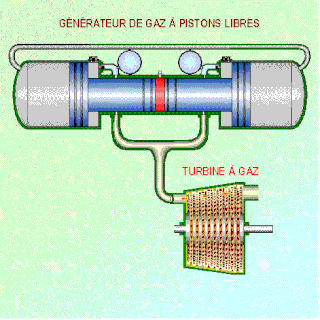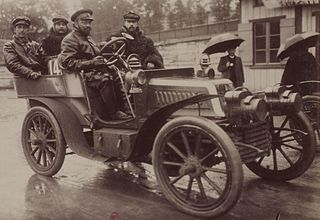
A Naphthalene locomotive was tested in France in 1913. It was built by Schneider-Creusot for use in their own plant.

A Naphthalene locomotive was tested in France in 1913. It was built by Schneider-Creusot for use in their own plant.
At the beginning of the twentieth century, steam locomotives continued to dominate the railways but alternatives were being considered. One of the problems to be solved was that of finding a cheap fuel. Liquid fuels, such as naphtha, petrol, benzole and alcohol had all been tried, but were expensive. Naphthalene seemed attractive because of its low cost, due to its origin from coal tar. An experiment was carried out by Schneider-Creusot. The Schneider establishment consisted of two distinct areas that were connected to each other by a rail link running through a tunnel. Steam traction was in use and the tunnel was filled with smoke from the locomotives. Following experiments carried out on a Renault car, it was decided to build a small naphthalene-powered locomotive.
The prototype was designed by the chief designer of Schneider, Eugène Brillié, in conjunction with the Society of French Civil Engineers. The locomotive was standard gauge with a cab and a bonnet containing the engine. There were two sets of buffers, at different heights, for coupling to normal railway wagons and to flat wagons for internal use within the plant. It was equipped with an automobile-derived internal combustion engine with four cylinders, a displacement of 12,300 cm³ and a maximum power of 50 kW. The engine was designed by Brillié.
Since naphthalene, at ordinary temperature and pressure, is in a solid state, the engine was started with petrol or benzene. The naphthalene tank was enclosed in a water jacket, which was heated to boiling point by engine exhaust. Once the naphthalene (melting point 80°C) had liquified, it could be used as a fuel. [1] British patent 26541 [2] awarded to Gaston Paul Jean Lion and Eugène Brillié in 1907, describes a fuel melting system but it differs from that described above. There is no water jacket and the solid fuel is heated directly by the exhaust gas. It would be difficult to regulate the temperature in such a system and this may be why the water jacket was introduced. The water jacket system was a Schneider patent, GB190821478. [3]
Transmission of power from the engine to the wheels was by a pneumatic transmission system called the "Hautier aerothermal transformer". It consisted of an air compressor, driven by the prime mover, which fed a compressed air motor which drove the wheels. Hautier is not identified but he may have been Camille Jean Hautier who held several patents for compressed air transmission systems, e.g. GB190928918 and GB191308846. [4] [5] The general construction of the machine was similar to that of other locomotives of its time. From the little information available, it seems that it was equipped with a handbrake only.
The locomotive began its service in 1913 within the Schneider plant. The company's management then asked the Chemins de fer de l'État to test it with their dynamometer car. The trials took place in April 1913 on a two-kilometre link between the Harfleur workshops and the Le Hoc range. The locomotive hauled a load of up to 160 tonnes with a tractive effort of 7.9 kN. In regular use within the Schneider plant, the locomotive met expectations for traction but its maintenance proved to be very onerous. A similar, but narrow-gauge, locomotive of 150 kW was built for a railway company in southern Algeria but it appears to have been scrapped after only a few years.
There was also interest in the use of naphthalene as a motor fuel in the United Kingdom. In 1917, the Commercial Motor reported on experiments conducted by J.H. Willis and G.G. Wilson, of Birmingham Corporation Gas Works, using naphthalene fuel in a 10 hp motor boat engine. The tests were hailed as a success but nothing further seems to have been done. [6]
The idea seems to re-surface periodically. A 1997 patent of Luis Cisneros Zazueta claims: "The invention can be used for all type of four-cycle gasoline engines operating under the Jammes Otto thermodynamic cycle, which comprise a carburator or a fuel injection system, the number of cylinders being unimportant. Naphthalene low cost and efficiency make the use of this device inexpensive". [7]

An engine or motor is a machine designed to convert one form of energy into mechanical energy. Heat engines convert heat into work via various thermodynamic processes. The internal combustion engine is perhaps the most common example of a heat engine, in which heat from the combustion of a fuel causes rapid pressurisation of the gaseous combustion products in the combustion chamber, causing them to expand and drive a piston, which turns a crankshaft. Electric motors convert electrical energy into mechanical motion, pneumatic motors use compressed air, and clockwork motors in wind-up toys use elastic energy. In biological systems, molecular motors, like myosins in muscles, use chemical energy to create forces and ultimately motion.

A locomotive or engine is a rail transport vehicle that provides the motive power for a train. If a locomotive is capable of carrying a payload, it is usually rather referred to as a multiple unit, motor coach, railcar or power car; the use of these self-propelled vehicles is increasingly common for passenger trains, but rare for freight.

George "Gogu" Constantinescu was a Romanian scientist, engineer and inventor. During his career, he registered over 130 inventions. He is the creator of the theory of sonics, a new branch of continuum mechanics, in which he described the transmission of mechanical energy through vibrations.

An opposed-piston engine is a piston engine in which each cylinder has a piston at both ends, and no cylinder head. Petrol and diesel opposed-piston engines have been used mostly in large-scale applications such as ships, military tanks, and factories.

A diesel locomotive is a type of railway locomotive in which the prime mover is a diesel engine. Several types of diesel locomotives have been developed, differing mainly in the means by which mechanical power is conveyed to the driving wheels.

The valve gear of a steam engine is the mechanism that operates the inlet and exhaust valves to admit steam into the cylinder and allow exhaust steam to escape, respectively, at the correct points in the cycle. It can also serve as a reversing gear. It is sometimes referred to as the "motion".

Crossley, based in Manchester, United Kingdom, was a pioneering company in the production of internal combustion engines. Since 1988 it has been part of the Rolls-Royce Power Engineering group.

A gas turbine locomotive is a type of railway locomotive in which the prime mover is a gas turbine. Several types of gas turbine locomotive have been developed, differing mainly in the means by which mechanical power is conveyed to the driving wheels (drivers). A gas turbine train typically consists of two power cars, and one or more intermediate passenger cars.
Tilling-Stevens was a British manufacturer of buses and other commercial vehicles, based in Maidstone, Kent. Originally established in 1897, it became a specialist in petrol-electric vehicles. It continued as an independent manufacturer until 1950, when it was acquired by the Rootes Group.
A steam diesel hybrid locomotive is a railway locomotive with a piston engine which could run on either steam from a boiler or diesel fuel. Examples were built in the United Kingdom, Soviet Union and Italy but the relatively high cost of fuel oil meant that the designs were not pursued.

A free-piston engine is a linear, 'crankless' internal combustion engine, in which the piston motion is not controlled by a crankshaft but determined by the interaction of forces from the combustion chamber gases, a rebound device and a load device.
Air Commodore William Helmore CBE, PhD, MS., FCS, F.R.Ae.S. was an engineer who had a varied and distinguished career in scientific research with the Air Ministry and the Ministry of Aircraft Production during the Second World War, as a broadcaster, and for two years as Member of Parliament for Watford 1943–1945.

A naphtha launch, sometimes called a "vapor launch", was a small motor launch, powered by a naphtha engine. They were a particularly American design, brought into being by a local law that made it impractical to use a steam launch for private use.
The Still engine was a piston engine that simultaneously used both steam power from an external boiler, and internal combustion from gasoline or diesel, in the same unit. The waste heat from the cylinder and internal combustion exhaust was directed to the steam boiler, resulting in claimed fuel savings of up to 10%.

William Joseph Still was an English engineer. He was born at Reigate on 17 August 1870. In 1884, he went to Canada to work for a firm of electric vehicle manufacturers. In 1894, he returned to England, where he invented a double-acting diesel-steam engine in which waste heat from the cylinder jacket and the exhaust was used to produce steam to assist the diesel engine. This is covered by U.S. patent 1230617 of 1917. Still also invented the Still heat-transmitting tube which was used in refrigeration plant.

A petrol-paraffin engine, TVO engine or gasoline-kerosene engine is an old-fashioned type of dual-fuel internal combustion engine with spark-ignition, designed to start on petrol (gasoline) and then to switch to run on paraffin (kerosene) once the engine is warm. The grade of paraffin used is known as tractor vaporising oil in the UK.
Class E el-8 was a Russian diesel-electric locomotive built by Krupp in 1933 with engines by Sulzer and electrical equipment by Secheron.

Auguste Eugène Brillié (1863-1940) was a French engineer, who invented the first French battle tank the Schneider CA1.

An internal combustion locomotive is a type of railway locomotive that produces its pulling power using an internal combustion engine. These locomotives are fuelled by burning fossil fuels, most commonly oil or gasoline, to produce rotational power which is transmitted to the locomotive's driving wheels by various direct or indirect transmission mechanisms. The fuel is carried on the locomotive.